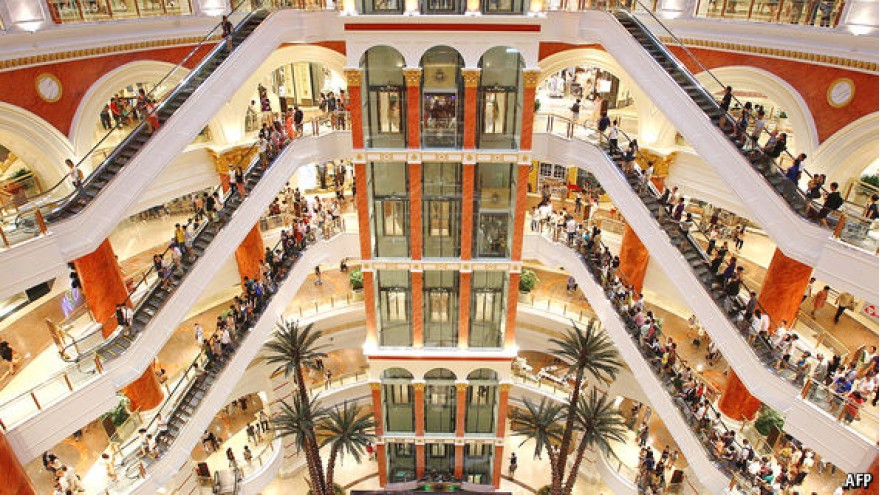Doughty but not superhuman
IN THE 1950s Caoyang New Village, then on the outskirts of Shanghai, became one of China’s first model settlements for heroic socialist workers. Thousands moved into its plain, lookalike homes to man its state-owned textile mills. Today, rising from the once-modest streets is a gaudy building intended for a new kind of model citizen: consumers.
Global Harbor (pictured) ranks among the world’s biggest shopping malls, its floor space equivalent to nearly 70 football fields. It blends ersatz European architecture with a distinctly Asian selection of stores. Beneath its vaulting glass domes and mock renaissance murals are a Hello Kitty café, a half-dozen noodle restaurants, jewellery shops dripping with gold and a theatre used for karaoke contests.
It is only a slight exaggeration to say that China’s economic hopes rest on the faux-Corinthian columns of Global Harbor. With the country’s decades-old investment boom fast dwindling, it needs consumption to kick in as a new driver of growth. This rebalancing has been talked about for years, but has become more urgent as China’s industrial downturn has deepened. The nationwide...Continue reading





Comments